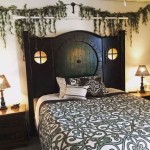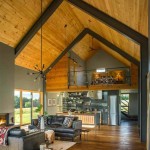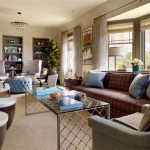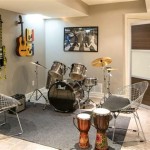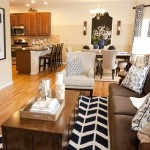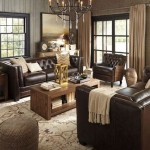```html
Interior Decor Living Room Ideas: A Comprehensive Guide
The living room serves as a central hub in many homes, a space for relaxation, entertainment, and connection. Consequently, thoughtful interior decoration is paramount to creating an environment that is both aesthetically pleasing and functionally effective. Effective living room decor involves careful consideration of color palettes, furniture arrangement, lighting schemes, and accessory selection, all contributing to a cohesive and inviting atmosphere.
This article provides a comprehensive overview of various interior decor ideas for living rooms, exploring key elements and strategies to aid in transforming a space into a personalized sanctuary. Factors that influence design choices, such as room size, natural light availability, and desired aesthetic style, will be examined. Different design styles, from minimalist to maximalist, will be discussed with practical examples and implementation considerations.
Understanding Spatial Dynamics and Layout Optimization
Before embarking on any decorating project, it is crucial to understand the spatial dynamics of the living room. This involves assessing the room's dimensions, architectural features (such as windows, fireplaces, and doorways), and natural light sources. Optimizing the layout involves strategically arranging furniture to maximize space, facilitate traffic flow, and create focal points.
In smaller living rooms, maximizing floor space is key. Opting for smaller-scale furniture, such as a loveseat instead of a full-sized sofa, or choosing furniture with built-in storage can be beneficial. Wall-mounted shelves, rather than bulky floor-standing units, can also help to create a sense of spaciousness. Strategic use of mirrors can visually expand the room by reflecting light and creating an illusion of depth.
Larger living rooms offer more flexibility in terms of furniture arrangement. Consider dividing the space into distinct zones for different activities, such as a seating area for conversation, a reading nook, or a home entertainment center. Area rugs can be used to define these zones and anchor the furniture within each area. Careful consideration of traffic flow is still important in larger rooms to ensure easy navigation and prevent overcrowding.
Focal points play a crucial role in creating a balanced and visually appealing living room. A fireplace, a large window with a scenic view, or a striking piece of artwork can all serve as focal points. Furniture should be arranged to draw attention to the focal point and create a sense of visual hierarchy. Avoid creating multiple competing focal points, as this can lead to a cluttered and disorganized feel.
Color Palette Selection and its Impact on Ambiance
The color palette is a foundational element in interior decor, significantly influencing the overall ambiance and perceived size of the living room. Color psychology suggests that different colors evoke different emotions and can impact mood and energy levels. Careful selection of colors is essential to creating a living room that reflects the desired atmosphere.
Neutral color palettes, such as whites, grays, and beiges, are versatile and create a calming and sophisticated backdrop. These colors can be paired with pops of color through accessories, artwork, or accent furniture. Neutral palettes are particularly well-suited for smaller living rooms as they tend to make the space feel larger and brighter. They also provide a timeless appeal, making it easier to update the decor with changing trends.
Warm color palettes, such as reds, oranges, and yellows, evoke feelings of warmth, energy, and comfort. These colors can be used to create a cozy and inviting atmosphere, particularly in rooms with limited natural light. However, it is important to use warm colors judiciously, as too much can be overwhelming. Consider using warm colors as accents, rather than painting the entire room in a bold hue.
Cool color palettes, such as blues, greens, and purples, evoke feelings of calmness, serenity, and relaxation. These colors are well-suited for creating a tranquil and peaceful living room environment. Cool colors can also help to make a room feel larger and airier. They are particularly effective in rooms with ample natural light. Consider using different shades and tones of cool colors to create depth and visual interest.
Accent colors play a crucial role in adding personality and visual interest to the living room. These colors can be introduced through accessories, artwork, throw pillows, and accent furniture. Consider using contrasting colors to create a bold and dynamic look, or choose colors that complement the primary color palette for a more harmonious feel. The 60-30-10 rule is a widely used guideline for color distribution, suggesting that 60% of the room should be the dominant color, 30% a secondary color, and 10% an accent color.
Lighting Strategies and their Functional and Aesthetic Roles
Lighting is a critical element in interior decor, serving both functional and aesthetic purposes. Effective lighting can enhance the ambiance of the living room, highlight architectural features, and provide adequate illumination for various activities. A well-planned lighting scheme should incorporate multiple layers of lighting to create a balanced and versatile environment.
Ambient lighting, also known as general lighting, provides overall illumination for the room. Recessed lighting, chandeliers, and ceiling-mounted fixtures are common sources of ambient lighting. In smaller living rooms, a single ceiling fixture may be sufficient, while larger rooms may require multiple sources of ambient light. Dimmers can be used to adjust the brightness of ambient lighting to create different moods.
Task lighting provides focused illumination for specific activities, such as reading, writing, or crafting. Table lamps, floor lamps, and adjustable desk lamps are common sources of task lighting. Position task lighting strategically near seating areas or workspaces to provide adequate illumination without creating glare. Adjustable lamps allow for greater flexibility in directing light where it is needed most.
Accent lighting is used to highlight architectural features, artwork, or other decorative elements. Track lighting, spotlights, and picture lights are common sources of accent lighting. Accent lighting can be used to create visual interest and add depth to the room. Consider using warm-toned light bulbs for accent lighting to create a softer and more inviting glow.
Natural light is a valuable asset that should be maximized whenever possible. Keep windows clean and free of obstructions to allow as much natural light to enter the room as possible. Consider using sheer curtains or blinds to filter the light and reduce glare. Mirrors can also be used to reflect natural light and brighten the room.
Smart lighting systems offer enhanced control and customization options. These systems allow you to control the brightness, color temperature, and even the color of your lights remotely. Smart lighting can be programmed to automatically adjust throughout the day, mimicking natural sunlight patterns. This can help to improve mood, energy levels, and even sleep quality.
Textiles and Texture: Adding Depth and Comfort
Textiles and textures play a crucial role in adding depth, comfort, and visual interest to the living room. The selection of fabrics, patterns, and textures can significantly impact the overall feel of the space. Consider incorporating a variety of textiles and textures to create a layered and inviting environment.
Upholstery is a key element in defining the overall style and comfort of the living room. Choose upholstery fabrics that are both durable and aesthetically pleasing. Consider factors such as stain resistance, abrasion resistance, and colorfastness. Natural fibers, such as cotton, linen, and wool, are generally breathable and comfortable, while synthetic fibers, such as polyester and acrylic, are more durable and stain-resistant. Leather upholstery adds a touch of luxury and sophistication.
Area rugs can anchor the furniture, define zones, and add warmth and texture to the living room. Choose a rug that is appropriately sized for the space and complements the color palette and style of the room. Consider the pile height and material of the rug. High-pile rugs are soft and luxurious, while low-pile rugs are more durable and easy to clean. Natural fiber rugs, such as wool and jute, add a textural element to the room.
Throw pillows and blankets add comfort, color, and texture to the seating area. Mix and match different sizes, shapes, and patterns of throw pillows to create a layered and inviting look. Consider using different textures, such as velvet, linen, and faux fur, to add depth and visual interest. Throw blankets can be draped over the sofa or armchair to add warmth and coziness.
Window treatments provide privacy, control light, and add a decorative element to the living room. Choose window treatments that complement the style of the room and provide the desired level of light control. Curtains, blinds, and shades are common options. Consider using layered window treatments, such as sheer curtains paired with blackout curtains, to provide both privacy and light filtering options.
Wall textures, such as wallpaper, paint finishes, and textured panels, can add depth and visual interest to the living room. Choose wall textures that complement the overall style of the room and enhance the architectural features. Consider using textured paint finishes, such as matte, eggshell, or satin, to add subtle depth to the walls. Wallpaper can be used to create a focal point or add a pop of color and pattern.
```
50 Inspirational Living Room Ideas Design

Living Room Decor Ideas For Your Home Design Cafe

Small Living Room Decorating Ideas Designcafe
:strip_icc()/cdn.cliqueinc.com__cache__posts__212361__-2030968-1483470364.700x0c-8571e60cad7b42a981ab29ae10b5c153-497b002f87af4747b2ab38b560e7c0fd.jpg?strip=all)
How To Decorate A Living Room 20 Ideas And Common Mistakes

How To Decorate A Living Room 11 Designer Tips Houzz

31 Living Room Ideas From The Homes Of Top Designers Architectural Digest

77 Best Living Room Decor Ideas 2025 Unique
:max_bytes(150000):strip_icc()/Mercedes-White-Small-Living-Room-58a8c6dc3df78c345b35e545.jpg?strip=all)
15 Simple Small Living Room Ideas For Minimalist Style

Living Room Ideas
Interior Designers Reveal The Mistakes You Re Making In A Living Room

